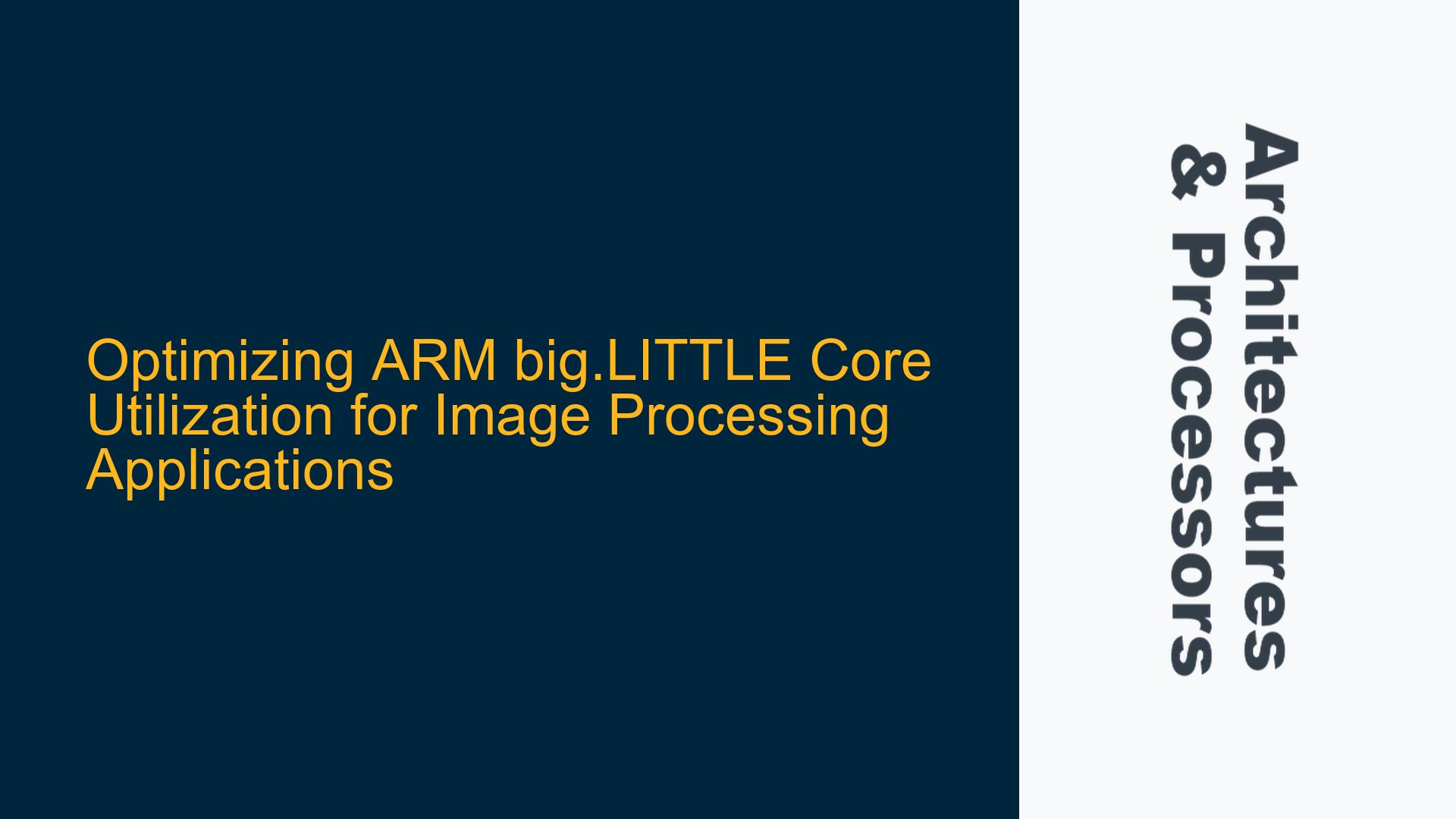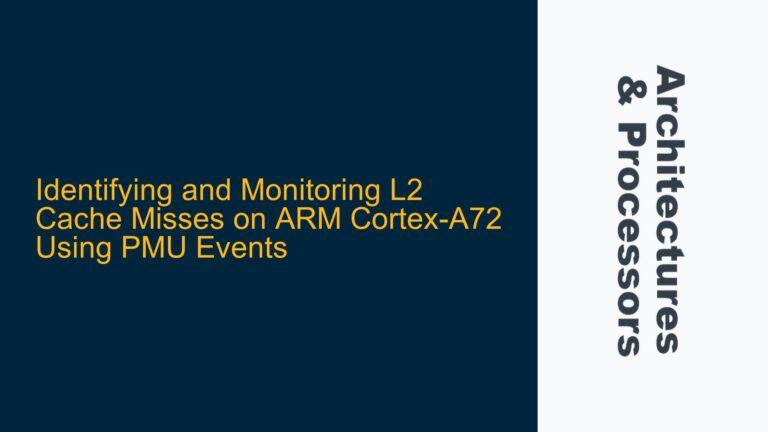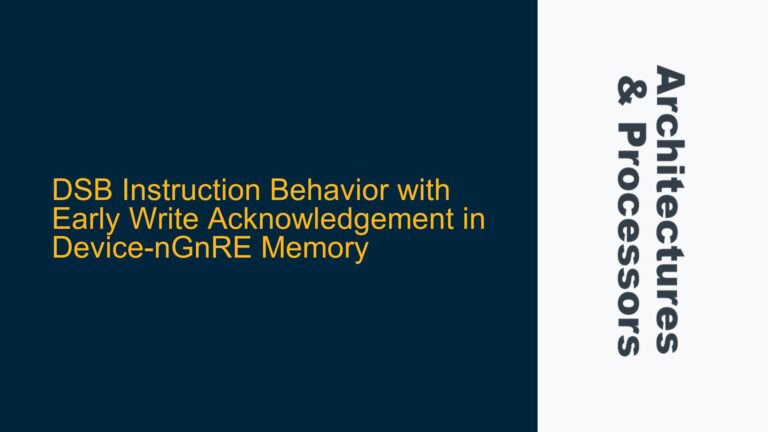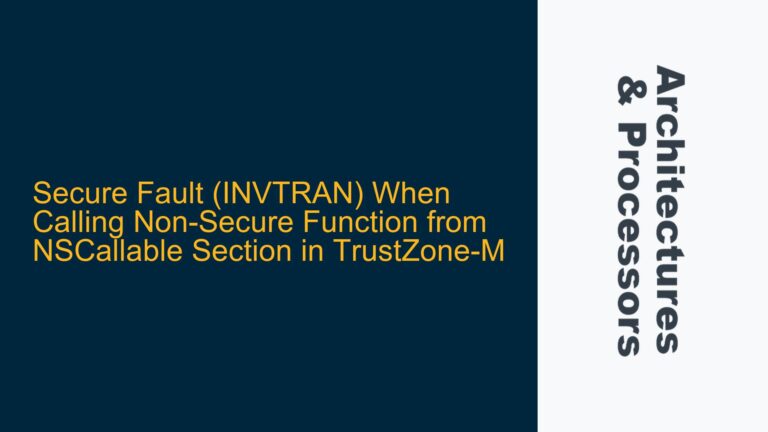ARM Cortex-A57 and Cortex-A53 Heterogeneous Multi-Processing Challenges
The ARM big.LITTLE architecture, exemplified by the Cortex-A57 (big) and Cortex-A53 (LITTLE) cores, is designed to balance performance and power efficiency. However, leveraging both core types simultaneously for a single application, particularly in image processing workloads, introduces several challenges. The primary issue revolves around the performance disparity between the Cortex-A57 and Cortex-A53 cores, which differ significantly in clock speed, cache hierarchy, and computational throughput. This disparity can lead to unstable frame rates and suboptimal performance when attempting to distribute workloads across both core types.
The Cortex-A57 cores are optimized for high-performance tasks, featuring deeper pipelines, larger caches, and higher clock speeds. In contrast, the Cortex-A53 cores are designed for energy efficiency, with simpler pipelines, smaller caches, and lower clock speeds. When an application is distributed across both core types, the Cortex-A53 cores may become bottlenecks, especially in compute-intensive tasks like image processing. Additionally, the overhead associated with task migration between the Cortex-A57 and Cortex-A53 clusters can negate the performance benefits of utilizing all eight cores.
Another critical factor is the cache coherency between the Cortex-A57 and Cortex-A53 clusters. The two clusters have separate L2 caches, and maintaining coherency across these caches can introduce latency. This latency is particularly problematic in image processing applications, where data consistency and low latency are crucial for maintaining stable frame rates. Furthermore, the difference in cache sizes between the Cortex-A57 and Cortex-A53 cores can lead to uneven data distribution, causing some cores to stall while waiting for data.
The ARM big.LITTLE architecture relies on the Global Task Scheduling (GTS) framework to manage task distribution between the Cortex-A57 and Cortex-A53 cores. However, GTS is not always effective in optimizing performance for heterogeneous workloads. In image processing applications, where tasks are often data-parallel but vary in computational intensity, GTS may fail to allocate tasks optimally, leading to underutilization of the Cortex-A57 cores and overloading of the Cortex-A53 cores.
Cache Hierarchy Disparities and Task Migration Overhead
The performance challenges in utilizing both Cortex-A57 and Cortex-A53 cores simultaneously stem from two primary factors: cache hierarchy disparities and task migration overhead. The Cortex-A57 cores feature a larger and more complex cache hierarchy compared to the Cortex-A53 cores. Each Cortex-A57 core has a private L1 cache and a shared L2 cache, while the Cortex-A53 cores have smaller L1 caches and a shared L2 cache. This disparity in cache sizes and structures can lead to inefficiencies when tasks are migrated between the two core types.
When a task is migrated from a Cortex-A57 core to a Cortex-A53 core, the data in the Cortex-A57’s L2 cache must be invalidated and transferred to the Cortex-A53’s L2 cache. This process introduces latency, which can be particularly detrimental in image processing applications where data throughput is critical. Additionally, the smaller L1 and L2 caches of the Cortex-A53 cores may not be sufficient to hold the working set of data for certain tasks, leading to frequent cache misses and further performance degradation.
Task migration overhead is another significant factor. The ARM big.LITTLE architecture relies on the GTS framework to migrate tasks between the Cortex-A57 and Cortex-A53 cores based on workload demands. However, the process of migrating a task from one core type to another involves saving the task’s state, transferring it to the new core, and restoring the state. This process can take hundreds of microseconds, during which the core is idle, leading to a loss of computational efficiency.
In image processing applications, where tasks are often short-lived and data-dependent, frequent task migrations can result in a substantial performance penalty. For example, if a task is migrated from a Cortex-A57 core to a Cortex-A53 core, the Cortex-A53 core may take significantly longer to complete the task due to its lower clock speed and smaller cache. This delay can cause subsequent tasks to stall, leading to an unstable frame rate.
The difference in clock speeds between the Cortex-A57 and Cortex-A53 cores further exacerbates the performance disparity. The Cortex-A57 cores typically operate at higher clock speeds, enabling them to complete tasks more quickly than the Cortex-A53 cores. When tasks are distributed across both core types, the Cortex-A53 cores may become bottlenecks, causing the overall application performance to degrade.
Implementing Core Affinity and Cache-Aware Task Scheduling
To address the performance challenges associated with running an image processing application on both Cortex-A57 and Cortex-A53 cores, several strategies can be employed. The first strategy is to implement core affinity, which involves binding specific tasks to specific cores. By binding compute-intensive tasks to the Cortex-A57 cores and less demanding tasks to the Cortex-A53 cores, the performance disparity between the two core types can be mitigated.
Core affinity can be implemented using the sched_setaffinity system call in Linux, which allows tasks to be pinned to specific CPU cores. For example, the main image processing loop can be pinned to the Cortex-A57 cores, while auxiliary tasks such as data preprocessing or postprocessing can be pinned to the Cortex-A53 cores. This approach ensures that the Cortex-A57 cores are fully utilized for the most demanding tasks, while the Cortex-A53 cores handle less critical tasks.
Another strategy is to implement cache-aware task scheduling, which involves optimizing task distribution based on the cache hierarchy of the Cortex-A57 and Cortex-A53 cores. Cache-aware task scheduling can be achieved by partitioning the workload into smaller tasks that fit within the L1 and L2 caches of the Cortex-A53 cores. This approach minimizes cache misses and reduces the latency associated with data transfer between the Cortex-A57 and Cortex-A53 cores.
Cache-aware task scheduling can be implemented using a combination of software techniques and hardware features. For example, the ARM Data Memory Barrier (DMB) and Data Synchronization Barrier (DSB) instructions can be used to ensure that data is properly synchronized between the Cortex-A57 and Cortex-A53 cores. Additionally, the ARM Cache Maintenance Operations (CMO) can be used to invalidate or clean cache lines, ensuring that data is consistent across both core types.
In addition to core affinity and cache-aware task scheduling, optimizing the application’s memory access patterns can further improve performance. Image processing applications often involve large datasets, and optimizing memory access patterns can reduce the number of cache misses and improve data throughput. Techniques such as loop unrolling, data prefetching, and memory alignment can be used to optimize memory access patterns and reduce latency.
Finally, profiling and tuning the application using performance analysis tools can help identify and address performance bottlenecks. Tools such as ARM Streamline and Linux perf can be used to monitor CPU utilization, cache performance, and task migration overhead. By analyzing the performance data, developers can identify inefficiencies and optimize the application for the ARM big.LITTLE architecture.
In conclusion, while running an image processing application on both Cortex-A57 and Cortex-A53 cores presents several challenges, these challenges can be mitigated through careful optimization and tuning. By implementing core affinity, cache-aware task scheduling, and optimizing memory access patterns, developers can achieve stable frame rates and improved performance on ARM big.LITTLE systems.






